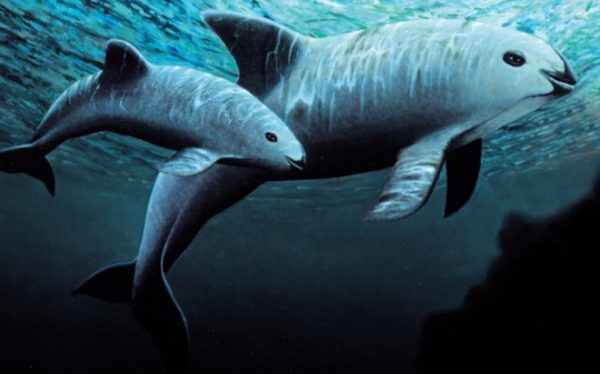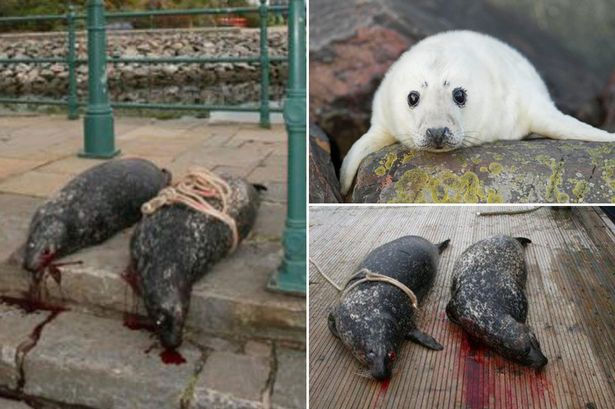Marine Trafficking: Disrupting the Bio-Diversity
- Kajal Wadhwana

- Jul 12, 2020
- 5 min read

After the trafficking of rhino horns, tiger skins and elephant tusks; illegal trade of threatened marine species - especially sea horses and sea cucumbers - is emerging as the new wildlife crime. Nicobar and Lakshwadeep Islands, Palk Bay, Gulf of Kutch and Mannar have large number of sea cucumbers and sea horses. Posing a major threat to the already depleting marine biodiversity, India's coastal waters are fast becoming base for easy poaching by international gangs. What is more alarming is that- these gangs have moved from sailing away with the species to illegally transporting them in international flights.
How does this become so easy to trade?
According to sources in the Wildlife Crime Control Bureau (WCCB), the intelligence arm of the environment ministry, sea horses and sea cucumbers are first poached by local individuals, particularly fishermen who are funded by larger groups. International networks, involved in their trafficking, ferry the animals on flights to China and South East Asia. Both sea horses and sea cucumbers are protected species under the Wildlife Protection Act of 1972 and are listed under Appendix I and II of the Convention on International Trade in Endangered Species of Wild Fauna and Flora (CITES), respectively. While sea horses thrive in deep sea waters, sea cucumbers inhabit shallow waters.
Many marine species including marine mammals, sea turtles and many more are also on the edge of extinction as climate change and over-fishing become a major threat to their existence. Is all this a result of human activity?
Human activities are now recognized as having an impact on our environment and our global ecosystem. It is an essential condition of human viability taken on the long run. Our moral duty is thus to protect this natural legacy, because biodiversity is an essential part of life on our planet. The main international legal base for protection and preservation of wildlife diversity is the Convention of International Trade in Endangered Species (CITES) signed the 1st January 1973. This convention protects endangered species against illegal trafficking and illegal capture. The main identified danger for the sustainability of biodiversity is illegal human activities including international wildlife trafficking.

How does illegal trafficking occur?
Wildlife trafficking can be compared to international drug trafficking: logic and economic issues are comparable but for the legal risks which are negligible. The reality is that the consumer demand of exotic animals and plants creates opportunities for traffickers. They use all illegal importation ways, for example maritime transport, to respond to this demand. This traffic exists because legal protection for species is not the same in all the countries of the world. It’s another legal weakness for wildlife international legal protection. Control authorities can act against illegal trafficking only if states have legal competences for that. The illegal trafficking of wildlife is estimated annually to be worth between US$7 – $23 billion and rivals illegal drug sales. Endangered animals are being hunted to extinction by armed gangs at the behest of international crime syndicates. We are aware of the marine species that have been threatened by illegal fishing. The taste for shark fin soup has caused the deaths of millions of sharks, but there are other products that have received less notice. The demand for manta gills has risen dramatically over the last decade. The gills can sell for up to $500 per kilogram. And are used in soup with the supposed benefits of boosting the immune system, curing cancer, chickenpox, and of course for fertility issues. None of these purported medical benefits are supported by science, nor have they ever been mentioned as a treatment in traditional Chinese medical texts, but the facts have not slowed down the slaughter of these magnificent creatures. The commonly trafficked two main species are-

Vaquita Nears Extinction
There is a precipitous decline in the number of Vaquitas, the world’s smallest porpoise and most endangered marine mammal. It is now estimated that there are no more than 30 Vaquitas still swimming the waters of the northern Sea of Cortez in Mexico. Vaquitas are unfortunately entangled in gill nets intended to catch a fish called the Totoaba- that is also endangered. The Totoaba is sought after for its swim bladder which can sell for up to US$20,000 per kilo on the Chinese black market, for use in traditional Chinese Medicine!
Seahorse Slaughter
Another iconic underwater species- the seahorse. In 2015 it was estimated that twenty million seahorses were used in traditional Chinese medicine. The seahorse is believed to cure a wide spectrum of diseases and ailments, here are just a few things that you will benefit from by boiling up a bit of dried seahorse: asthma, incontinence, insomnia, broken bones, thyroid disorders, heart disease, skin infections abdominal pain, impotence (of course impotence) and to facilitate childbirth. So we are on the brink of losing seahorses because someone thinks that drinking a soup or applying a plaster of dried seahorse is going to mend a broken bone. Yes, education is really, really important.

Which legislation can be applied on specific illegal trafficking?
The answer is complex because each country has its own legislation about wildlife regulations. The rules of regional organisation can complete and support the national law about this problematic. The CITES convention aims at protecting the sustainably of endangered species at the international legal level. They give an exhaustive list of protect species with import prohibition or with importation limits. According to article VIII, States parties shall take appropriate measures to enforce the provisions of the Convention and to prohibit trade in specimens in violation thereof
The CITES convention tries to engage states to use or create all legal measures to guarantee preservation of natural life. This raises the need to develop the legal framework for this issue and the project of convention for protection of biodiversity in High Sea3 goes in this sense. In the same way, we have a true political preoccupation to create maritime protected areas, which has to contend with economic limits. In fact, natural marine or land parks do not have enough logistics to protect their animals or plants resources. To be effective, authorities in charge of these areas need more economic and logistic support.
So How Do You Combat Illegal Trafficking of Wildlife?
In addition to interrupting the killing we need to interrupt the demand for these products and that means putting pressures on the governments of China and Vietnam. Because the largest trail in the illegal trafficking of wildlife ends there.
Getting Governments On Board
There are laws designed to protect endangered animals. In the U.S. there is the Endangered Species Act, plus, trade in animals can be made illegal under the terms of CITES, the multilateral treaty to protect endangered animals. But these laws have been in force without halting the wildlife slaughter. Individual governments have expanded their efforts to interdict illegal animal products from crossing their borders.
Saving Marine Life is the need of an hour for our bio-diversity and the Eco-system. Educational authorities need to spread more awareness about Marine Protection and Slaughter. With this I sign off. Contribute in saving Marine Life.
_edited.jpg)



Comments